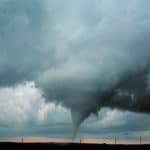Children: The bioterrorists we love
By Laura H. Kahn | September 16, 2007
Given their aversion to cleanliness and a dislike for hygiene, kids play a major role in spreading disease such as influenza.
Anyone who has ever lived or worked with children knows they’re not exactly hygienic. Their noses frequently drip with mucous, which they wipe on their arms and sleeves. They cough and sneeze with abandon, and they won’t wash their hands unless an adult hauls them to a sink for a scrubbing. However, teaching children proper hygiene, vaccinating them, and sequestering them during a deadly pandemic (such as influenza) are prudent strategies to prevent disease from spreading.
Hygiene
Children should be taught proper hand-washing techniques because if they don’t develop the habit to wash their hands as children, they certainly won’t do it as adults. (And there are plenty of adults, including physicians and nurses, who don’t regularly wash their hands.) Simple hand-washing with soap and water has been shown to save children’s lives. Yet, it’s stunning that something so simple is so difficult.
More than 100 years ago, Ignaz Semmelweis, a Hungarian obstetrician, went mad after trying to get his medical colleagues to wash their hands. To prove his point, he conducted a study: He found that the women whose obstetricians performed an autopsy and didn’t wash their hands before examining them in labor had much higher death rates from puerperal (childbirth) fever than those who were attended by physicians who had washed their hands. Despite his convincing evidence, Semmelweis’s fellow doctors refused to listen to him, and he died in a Vienna mental institution.
As for children, they should be taught to wash their hands after using the toilet, after sneezing, and before and after meals–particularly if they have food all over themselves. While washing with soap and water, they should sing “Happy Birthday.” Once the song is finished, they’ve washed their hands long enough. There are plenty of available educational materials on hand-washing for children.
Adults should also be taught to wash their hands properly. Cruise ship outbreaks of diarrheal illnesses are common because the closed setting amplifies the effects of poor hygiene. The problem
is so common that the Centers for Disease Control and Prevention published guidelines for proper hand hygiene specifically for cruise ships.
If soap and water aren’t readily available, alcohol-based hand sanitizing gels can be used to prevent the spread of germs. The gels must contain at least 60 percent alcohol in order to be effective. They come in handy bottles that can be carried in pockets or purses.
Vaccination
Before the era of childhood vaccines against diseases such as polio, measles, and rubella, children were the dependable next generation of susceptibles that spread these diseases in their communities. When children aren’t vaccinated, the speed at which these diseases can reemerge is amazing. For example, in 2005, four children in an Amish community in Minnesota contracted the polio virus. The initial patient was a 7-month-old immunocompromised girl who had been repeatedly hospitalized for recurrent severe infections; public health officials couldn’t identify the source of her infection, but they found the virus in the stools of three asymptomatic children in the community.
Some nations can’t or won’t vaccinate all of their children. In the late 1990s, Nigeria had a polio outbreak because people were refusing to get their children vaccinated. Religious leaders in northern Nigeria were spreading rumors that the vaccine could cause sterility or AIDS. In 2004, the polio virus that had surfaced in Nigeria spread to Sudan and 11 other countries. By 2006, Nigeria had the largest percentage (56 percent) of polio cases in the world. Nigeria is one of four countries (India, Pakistan, and Afghanistan being the others) in which the transmission of polio has never been broken.
Influenza is another viral disease that can be controlled with vaccination. Public health officials typically target the elderly, but the real money should be spent on children because they’re the ones who often spread the flu, impacting the morbidity and mortality of the elderly. Japan provides an excellent example of this. From 1962 to 1987, Japan vaccinated most of its schoolchildren against influenza. In response to some adverse reactions to the vaccine, the vaccination laws were relaxed in 1987 and repealed in 1994. Afterward, the number of influenza cases and deaths in the elderly increased. Researchers estimated that vaccinating Japanese schoolchildren had prevented approximately 37,000 to 49,000 deaths per year.
Sequestration
Day-care centers and elementary schools are typically ground zero for respiratory illnesses such as influenza. In addition to poor hygienic practices, children spread influenza because of physiological reasons; they’re particularly prone to shedding the virus early and with much higher viral levels than adults. Physicians don’t often recognize influenza in children even though young children frequently make outpatient visits for the disease. The virus can exist on nonporous surfaces such as steel or plastic for 24 to 48 hours, and on porous surfaces such as paper and cloth for 8 to 12 hours after contamination. Therefore, people can be exposed to the virus without knowing it. N95 masks aren’t available in children’s sizes; even if they were, it’s unlikely that a small child would keep one on for an extended time period.
Given the key role that children play in spreading the flu, it makes sense that pandemic influenza containment strategies start with children. This isn’t necessarily the case, and there have been many debates about early school closures in the event of a deadly influenza pandemic. Part of the reason for this is the paucity of data to support such a policy. However, computer modeling suggests that school closures and other targeted social distancing measures would decrease transmission rates. To wit, keeping teenagers away from hanging out with each other at malls would be just as important as keeping preschoolers from playdates. (See “Targeted Social Distancing Design for Pandemic Influenza.”) Additional supporting data, including the impact of vaccinating schoolchildren, the role of children in the spread of influenza in their households, and the under-recognition of influenza in children, provide compelling reasons for keeping children home during a deadly pandemic.
Of course, this policy could have a serious impact on businesses, as parents would be forced to stay home with their children. Parents who couldn’t telecommute would be at a distinct disadvantage and could suffer serious economic consequences. The flip side would be that their children might have a better chance of not getting (and spreading) a deadly disease.
In the United States, school closures are largely decided at the local level and in some cases, on a school-by-school basis. It would be better to have a national, coordinated policy, but at the moment, there’s no national coordination
on this issue–although dialogue is starting. At the very least, local government should have guidelines when making these decisions.
Historical studies of the 1918 influenza pandemic suggest that communities that sequestered themselves well had the lowest mortality rates. There’s no question that keeping children (preschoolers to teenagers) sequestered for prolonged periods would be a challenge for even the most motivated parent. But in the event of a deadly influenza pandemic, there wouldn’t be an alternative, particularly in the absence of an effective vaccine. As a colleague once put it, “The only thing worth the trouble of children, is children.”
Together, we make the world safer.
The Bulletin elevates expert voices above the noise. But as an independent nonprofit organization, our operations depend on the support of readers like you. Help us continue to deliver quality journalism that holds leaders accountable. Your support of our work at any level is important. In return, we promise our coverage will be understandable, influential, vigilant, solution-oriented, and fair-minded. Together we can make a difference.
Topics: Columnists















